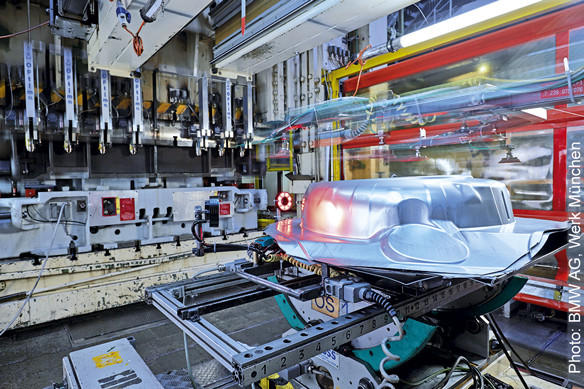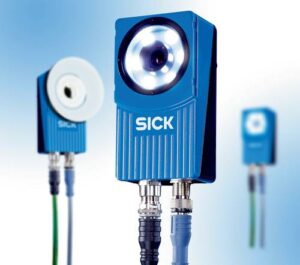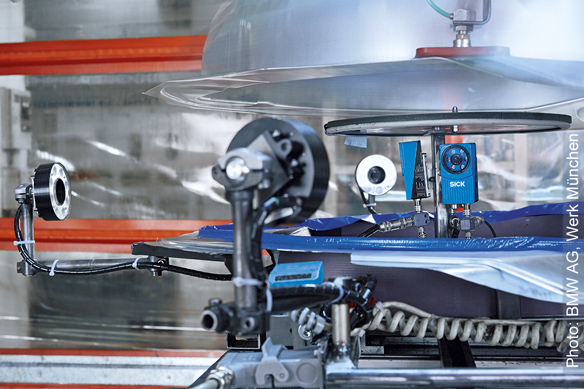In today's automotive manufacturing environments, it is necessary to maintain high throughput while still ensuring maximum production quality. Yet, how to accomplish this is often a difficult task…but not an impossible one.
With the BMW 3 Series, BMW is one such company that proves both high productivity and high quality can be achieved.
The BMW 3 Series comprises more than 400 different pressed parts in the body-in-white area. Every day, the Munich Presswerk II of the BMW Group processes about 600 tons of sheet metal, resulting in more than 130,000 body components. To keep pace with this high number of components, it is essential to detect and sort defective components as early as possible.
This is where SICK's Inspector I40 vision sensor comes in.
Integrated lighting, image evaluation, and Ethernet interface
SICK developed a solution that was just as simple as it was cost effective. Its core is the Inspector I40 2D vision sensor with integrated lighting, image evaluation, and Ethernet interface.
Independent of the components, crack inspection already takes place when the body panels are deposited at the orientation station, which serves as an intermediate storage space. A so-called feeder deposits the sheet metal, deep-drawn in the lead press, into this station. Exerting a press force of 1,800 tons, this press performs the majority of the part forming process.
The subsequent presses take on additional cutting and forming processes, resulting in the step-by-step creation of a precisely shaped complex component.
Mounted above the orientation station is the Inspector I40 vision sensor from SICK. The ICL300 external illumination unit illuminates the sheet metal from the outside. The sensor is actuated in such a way that it works as a pixel counter in the dark. Components that are acceptable remain completely in the dark.
When cracks are detected, the light passes through, appearing as light pixels. When the sensor detects a crack, the facility is stopped and the appropriate error message is issued. All acceptable components are transported to the next press by means of another feeder.
Employing this simple solution makes it unnecessary to use an additional PC for image evaluation. The sensor is integrated directly into the press controller via its input and output subassembly.
“It is possible to integrate this type of crack inspection without major effort into any existing facility and to use it for any formed parts,” says one employee at BMW Maintenance.
Initial trials in production operations yielded extremely high accuracy in detecting defective components. So far, the crack inspection has been used at the Munich Presswerk for two different components. “However, we do not rule out deployment for additional parts in the future.”








